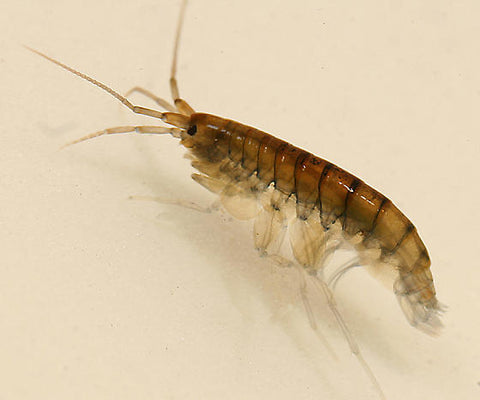There are a variety of freshwater and saltwater forms of scuds. Identifying the different families and species is not always so easy. In addition, some of the different families are mentioned by that name in one part of the world and something else in another part. What they have in common, however, is that they are all incredibly similar to each other and this makes it redundant for fly fishermen to distinguish them, an imitation of one family or species works perfectly for several of the other families and species. What they all have in common is that they are relatively small in size and in many bodies of water, mainly lakes and still-flowing parts of streams, rivers and along the coast, a very important part of the fish's food.
Studies show that 80-95% of the fish's food is taken below the water surface, not just below, in or on the surface. All these families are very old and have existed on our earth far longer than mankind. They have always been an important food for aquatic animals for millions of years and thrive best in clean bodies of water. You rarely find any of these in, for example, humus-rich and slightly acidified to acidified forest lakes. Crouch to form when at rest to quickly straighten the body when moving in something that can be compared to a jump.
Whether you fish in lakes, streams, rivers, streams or along the coast in search of sea trout, there is a very good chance that the fish you are looking for will take these small crustaceans at some point each day. Imitations of these in your box are as basic as not forgetting the fly reel at home when you go fishing. In terms of color, they come in everything from white, gray and pink, to olive brown. The most common, however, is that they range in color from light olive to just olive brown. When you fish the imitations, please do so with short, jerky movements, as if the fly is jumping forward through the water. A short, quick pull on the fly line of a decimeter or two, so that the fly moves nimbly forward and upwards. Then let it fall for a second or two towards the bottom again, before making another move. This technique also works well in calmer sections of flowing water, for example ponds or slow pools and seals.

